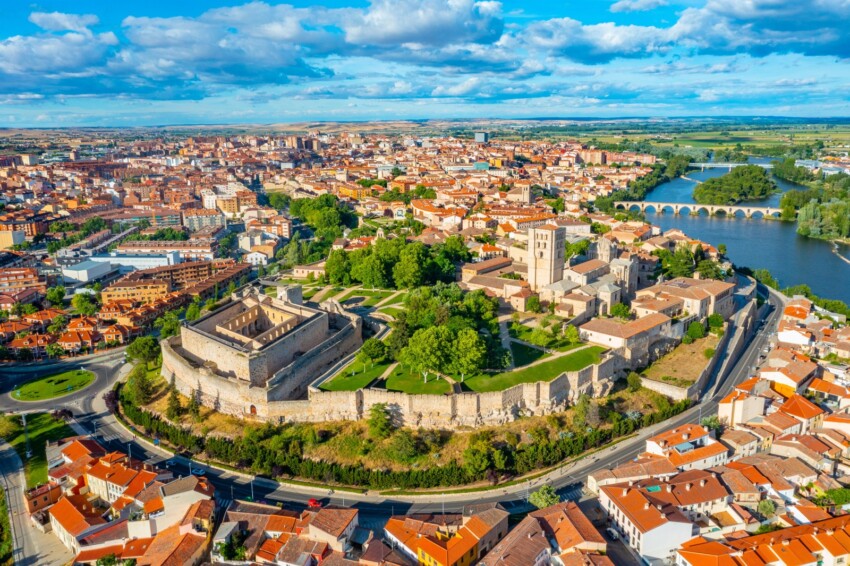

Zamora is a quiet and orderly town located in the Autonomous Community of Castile and Leon, not far from the border with Portugal. Situated on a small hill along the Duero River, the city of Zamora is also known as ‘the City of the Romanesque’ because it preserves an important legacy of Romanesque art in its historical centre.
Founded by the Vaccei, the city was later conquered by the Romans and it is in this period that many of the battles led by the local hero Viriato, who fought for the independence of these territories from the empire, date back to. In the Middle Ages the city was dominated first by the Arabs and then from the 11th century by the Christians. It was from the 11th century that Zamora reached high levels of political, artistic and architectural splendour.
The city boasted a strategic position that made it an important crossroads, as a thousand-year-old Roman road, the Vía de la Plata, passed through here, linking the cities of Mérida and Astorga. Towards the end of the 15th century, however, Zamora began to lose importance both strategically and economically in favour of other more central locations.
Over time, the city of Zamora has been able to preserve a unique architectural heritage, especially for its numerous examples of Romanesque art. Added to this are a historical heritage and a truly exceptional gastronomic tradition!
The historical centre of Zamora is enclosed within the city walls of medieval origin and contains numerous Romanesque churches and Renaissance palaces. To enter the city, one must cross the bridge over the Duero River and once inside, walk along narrow cobbled streets that lead to the Plaza Mayor, the heart of the town.
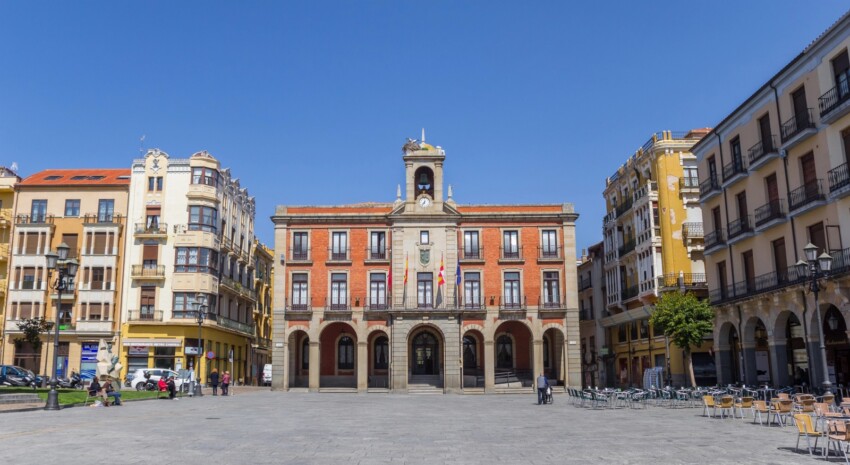
The Plaza Mayor is the city’s main square and the meeting place for locals. This is where the city market takes place and is home to the Town Hall and the Church of San Juan. Next to the Church is the statue of Merlú, a work composed of two figures: one man plays the trumpet while the other plays the drum. This creation represents a couple of congregants of the Jesús Nazareno brotherhood whose task is to gather the faithful to start processions during Semana Santa (Holy Week).
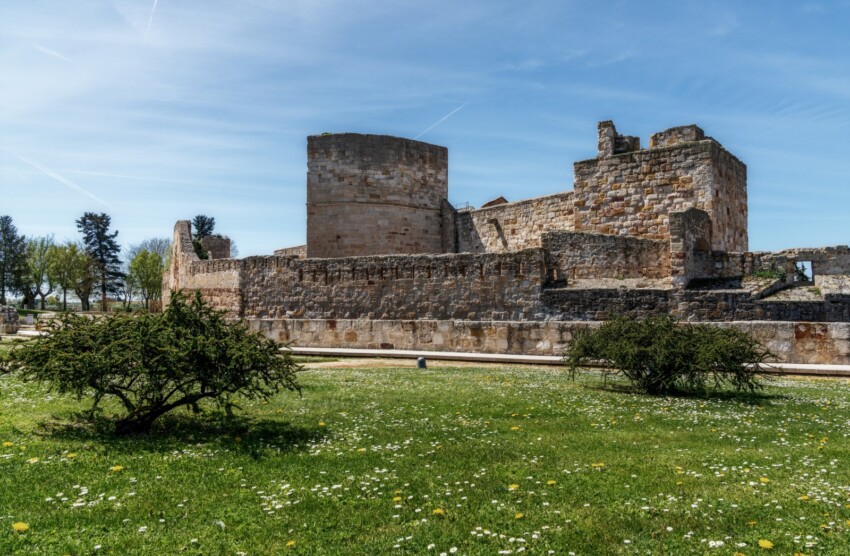
Built on a hill at the highest point of the city, the Castle of Zamora was a defensive fortress rather than a sumptuous palace. The origins of the complex are uncertain. According to some, it was erected by Alfonso II of Asturias in the 9th century, while according to other accounts the complex dates back to the mid-12th century during the reign of Ferdinand I of León.
The castle, which underwent several alterations during the reign of the Bourbons, now boasts a rhomboid layout with three towers, two of which are pentagonal. The fortress was surrounded by a moat and a counter moat and access was via a drawbridge. Inside is the arena, the lower patio, a large garden and the keep.
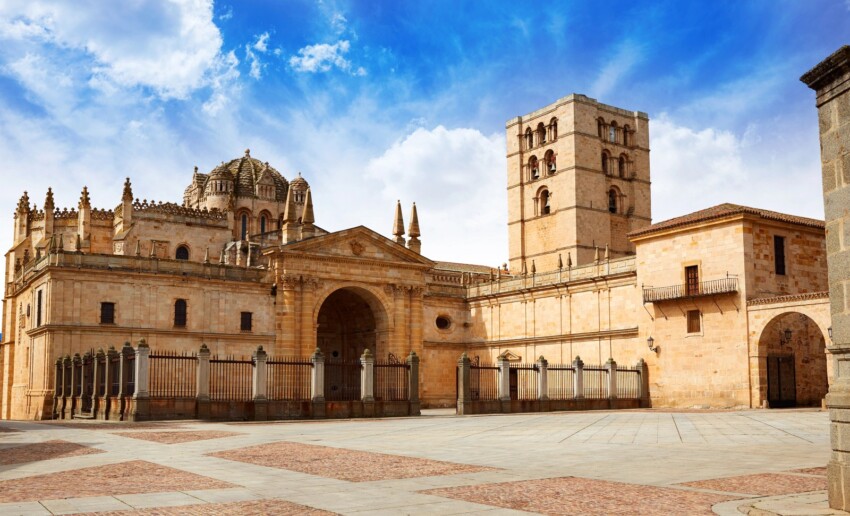
The Cathedral of Christ the Saviour is considered the smallest but also one of the oldest churches in the Community of Castilla y León. The Cathedral is Romanesque in style, has a Latin cross plan and was built in the 12th century, while the cloister and bell tower were constructed in the 13th century.
Inside, there is a central nave, two lower side aisles and three small semicircular apses from the 15th century. The choir, built between 1512 and 1516, is decorated with secular representations. The cloister houses the cathedral museum with a collection of Flemish tapestries that is considered one of the most important in Europe.
To learn more about the culture, traditions and history of these territories, a visit to the Ethnographic Museum of Castile and Leon is recommended. This modern building is located in the centre of Zamora and houses thousands of objects and artefacts of enormous historical and anthropological value.
The museum has five floors and is divided into four main sections: ‘Space and Environment’, ‘Time and Rituals’, ‘Forms and Design’ and ‘Soul and Body’. In the tour through the museum site, it will thus be possible to discover how the work, daily life and traditions of this region evolved.
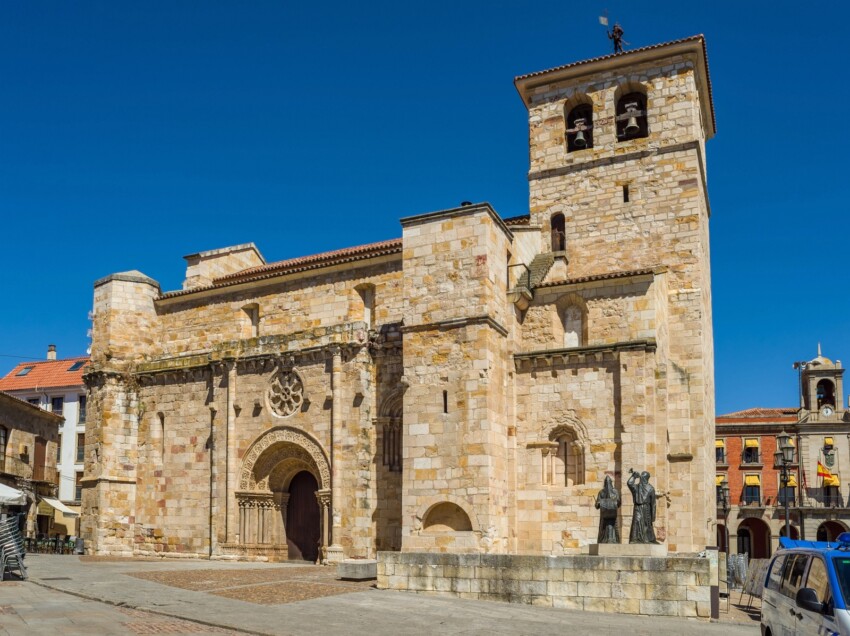
The Church of San Juan de Puerta Nueva is one of the finest examples of Zamoran Romanesque architecture. Its western façade, richly decorated with sculptural motifs, is a true masterpiece of Romanesque art. The interior of the building contains interesting historiated capitals and a remarkable Baroque altarpiece.
The square in front of the church is a popular meeting point for locals and offers numerous bars and restaurants where you can enjoy traditional Zamoran cuisine. During Holy Week, the church becomes one of the focal points of the processions.
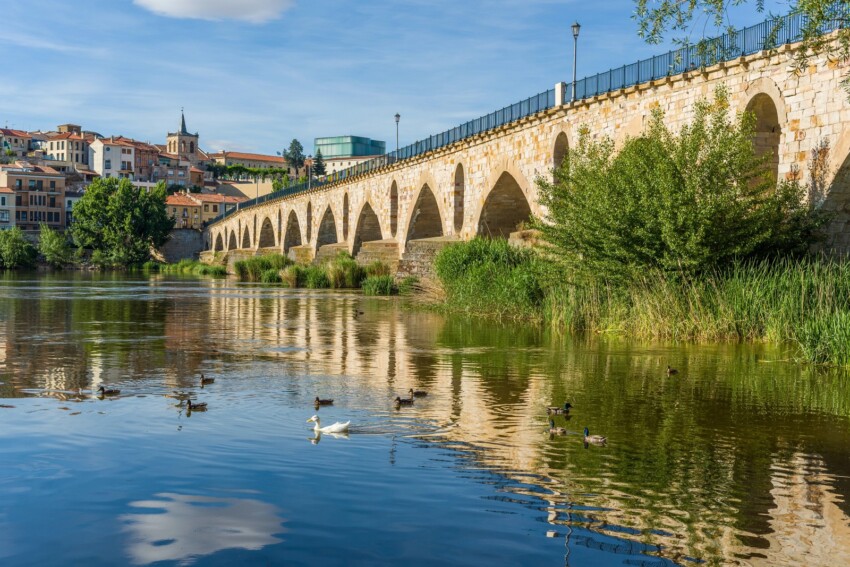
The Stone Bridge over the Duero River is one of the most representative symbols of Zamora. Built in medieval times on the remains of a Roman bridge, this structure of sixteen arches has witnessed centuries of history. The bridge is not only an important communication route but also a privileged vantage point from which to admire the outline of the ancient city and the sunsets over the river.
The recently redeveloped promenade along the banks of the Duero offers pleasant pedestrian and bicycle paths that allow one to appreciate the city from a different perspective. At dusk, the lighting of the bridge and churches creates a particularly atmospheric atmosphere.
The San Esteban Church is, after the Cathedral, one of the main Romanesque churches in Zamora. The religious building was erected between the end of the 12th and the beginning of the 13th century, but the interior was renovated during the 18th century in the Baroque style. At that time, the three naves present were converted into a single nave closed by three apses. Inside, there is also a vault dating from 1768 made by Francisco Castellote and decorated with Baroque-style stucco.
In the following map you can see the location of the main places of interest mentioned in this article.
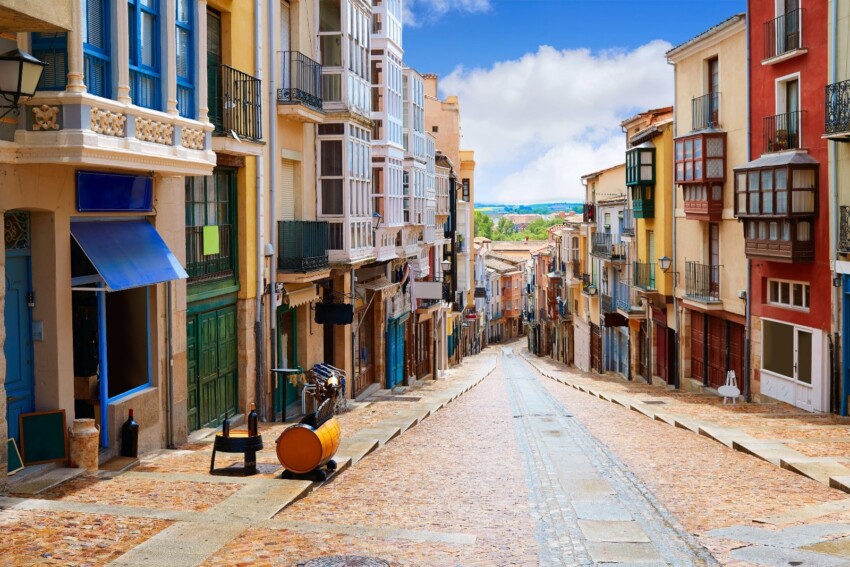
Zamora is a small town with a cosy, human-scale historic centre where you will find numerous hotels. Sleeping in this area of the city is definitely the best choice if you want to be close to the main sites of interest and fully experience the atmosphere of this town. In the centre, you can find not only hotels but also small inns and accommodation with a really cosy atmosphere. Consider that some establishments may be located inside historical buildings that have been converted.
Zamora is a destination that can be easily reached either by car or by public transport.
Those travelling by car from Madrid can take the A-6, while from Salamanca it is possible to travel along the A-66. From Valladolid, which is about 100 km away, it is possible to reach Zamora via the A-11. The Portuguese city of Braganza, on the other hand, is just over 102 km away and is connected to Zamora via the N-122.
Those wishing to travel by bus can use the lines of the ALSA company, which provides connections between Zamora and several Spanish cities such as Barcelona, Oviedo, Gijón and Seville. The city also has a railway station from which regional and high-speed trains depart.
What's the weather at Zamora? Below are the temperatures and the weather forecast at Zamora for the next few days.